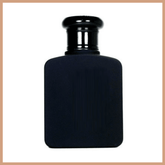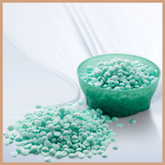How to Choose the Correct Wick for Your Candle
One of the most important aspects of candle making is knowing which wick to choose. Our guide on how to choose the correct wick for your candle will provide you with a more in-depth understanding on how important and vital this process of your candle making journey is and will also help you to jump straight into candle testing knowing the basic starter points on how to select the right wick.

Once thing is certain about choosing the right wick for your candle: Patience and dedication are required! This process can prove to be highly frustrating for some and can take weeks, if not months to get right. It will require testing different brands and sizes of wicks in your chosen vessels to see which performs the best. If you’re using a variety of vessel sizes then each vessel will require a different wick. Unfortunately, there isn’t a universal one-size-fits-all wick out there.
You may have selected your favourite fragrance oils, colours, wax and vessels however, if the wick isn’t right, you may find yourself slightly disappointed with the overall performance. It can be disheartening when things don’t go quite to plan, but our advice is to not give up.
Candles may actually be the hardest product you will make due to all the testing involved but rest assured, once you’ve cracked your first candle and those first few fragrances, you’ll be a master at making in no time.
Signs You’ve Chosen the Correct Wick for Your Candle
Here’s what you’ll be looking for to ensure you have the correct sized wick when the following points have been achieved:
- Little to no flickering of the flame(s)
- A nearly full to full melt pool measuring no deeper than ¼ inch deep. A full melt pool is when the molten candle wax reaches the edge of the vessel. Reaching a full melt pool on the second or even third 3-to-4-hour burn is totally normal.
- A cleanly burning wick. Little to no mushroom and no soot, although a very slight mushroom is perfectly fine and sometimes can’t be avoided. A mushroom is essentially a build-up of carbon on the top of the wick
- You candle gives off a great aroma with no chemical or ‘hot’ burning smell coming through
Choose a Wick that is Best Suited to Your Selected Wax

With many different brands of wick on the market, knowing which waxes the wicks work best in will help you get off to a very good start. Take a look below at some of our most popular waxes recommended for the wicks we supply here at Craftovator.
TCR Series Wicks
TCR wicks are designed for use with soy and other vegetable waxes such as rapeseed or coconut. Some popular waxes we’d suggest for use with these wicks are KeraSoy 4130 container wax, Nature Wax C3 container wax and Golden Wax 464 container wax.
Wedo Eco Series Wicks
Wedo Eco wicks work well in both vegetable and paraffin waxes but are especially suited for use with Sasol 6213 wax which is a paraffin and vegetable wax blend. Perfect for heavily fragranced or dyed candles. Some other popular waxes we’d suggest for use with these wicks are Kerawax 4600 paraffin pillar wax (pillar candles only) and Kerawax 4105 paraffin rapeseed blend container wax.
Wedo LX Series Wicks
LX wicks are most suited for use with paraffin waxes that have lower melting points. They can be used with vegetable waxes however, you may find you need to go up a few sizes than what you’d use with paraffin wax. Some popular waxes we’d suggest for use with these wicks are Kerawax 4105 paraffin rapeseed blend container wax and Sasol 6213 paraffin blend container wax.
Wedo Stabilo Series Wicks (formerly known as CD Wicks)
Stabilo wicks are especially suited to highly scented paraffin/blended wax or harder to melt vegetable waxes i.e. those with a higher melting point. Some popular waxes we’d suggest for use with these wicks are KeraSoy 4120 pillar wax (pillar candles only) and Nature Wax C6 soy coconut blend container wax.
Fragrance Oil or No Fragrance Oil – Why Is It Important When Choosing a Wick?

When it comes to choosing a wick best suited to your candle, it’s actually really important to take into account whether you’ll be using fragrance oil or not. This is because adding fragrance oil to your wax changes the entire composition and relationship between the wax blend and the flame of the burning wick.
For example, you may have made a well-burning unscented candle using a Stabilo8 wick. If you then decide to add fragrance oils to your candles, using the same Stabilo8 wick as before, you may find the candle doesn’t burn as you’d expect from your previous tests.
This is purely down to the blend of the oil with the wax which causes the wick to burn differently than that of an unscented candle. In this instance, you may need to use one or two wick sizes bigger (sometimes referred to as 'wicking up') in order for the wick to perform at its best i.e. a Stabilo 10 or 12.
Why Vessel Size Matters When Choosing Your Wick

The diameter of your vessels will play a big part when choosing the right wick to start your testing. Once you have the diameter of your vessel, you can use our handy wick sizing guides on the wicks product page to help determine which wick you would need.
See the wick brand/size example suggestions below for some of our most popular candle vessels. Remember, these suggestions are just a starting point so you may need to go up or down a size or more depending on the fragrance oil you choose.
Karen 30cl Clear Glass Container
The diameter of our Karen 30cl Clear Glass Container is 78mm. This would mean you’d use the following brand/size wicks as a starting point: TCR30/18, Eco14, LX20 or Stabilo14.
Karen 20cl Matte Black Container
The diameter of our Karen 20cl Matte Black Container is 70mm. This would mean you’d use the following brand/size wicks as a starting point: TCR27/16, Eco8-12 (this is a broad range so if you start with Eco10 you’d then be able to test to see if you need to wick up or down a size), LX16 or Stabilo12.
Persephone 30cl Geometric Container
The diameter of our Persephone 30cl Geometric Container is 85mm. This would mean you’d use the following brand/size wicks as a starting point: TCR33/18, Eco16 or Stabilo16.
If a single wick doesn’t perform very well, you can use two wicks in this container. If using two wicks, you simply halve the diameter of the glass. So, half of 85mm is 42.5mm. Your new brand/size wick suggestions would then be: 2x TCR21/12, 2x Eco0.5, 2x LX10 or 2x Stabilo6.
50cl Gloss White 3-Wick Bowl
The diameter of our 50cl Gloss White 3-Wick Bowl is 125mm. You would need to use three wicks with this bowl so you would split the overall diameter into three. This would mean you’d need three wicks around 41.6mm each (125/3 = 41.6). We’d suggest the following brand/size wicks as a starting point: 3x TCR21/12, 3x Eco0.5, 3x LX10 or 3x Stabilo6.
As you can see, the diameter of each vessel is different so you would need to use a wick suited to this diameter specifically. Some vessels may need just the one wick, some may work better with two or even three wicks.
When Would I Need to Use More Than One Wick?

As a general rule, one wick is used for a candle with a diameter of 3 inches (around 76.2mm). For every inch thereafter, you’d add one wick.
For example, for a 4-inch diameter vessel (around 101.6mm) you’d use two wicks, for a 5-inch diameter vessel (around 127mm) you’d use three wicks and so on. As we’ve covered above in measuring your candle vessels diameter, if one wick doesn’t prove to perform great in a vessel over 76.2mm in diameter, then try using two wicks. Just halve the vessels diameter to find the wick size you’d need.
However, some vessels will require two or more wicks and these are usually shown directly in the product name or description so you know when purchasing whether more than one will be required.
Remember, when using two or more wicks, it’s important to space them out evenly in your vessel. The wicks shouldn’t be too close or too far apart and they shouldn’t be too close to the glass.
Why Vessel Height Matters When Choosing Your Candle Wick
Another important factor to take into consideration when wicking your vessels is to check the height of your vessel. If this is less than 110mm (11cm) then our wicks are perfectly fine to use. If you’re using other vessels, whether purchased from elsewhere or custom made and they’re taller than 110mm, then you may need to source wicks on a roll which you can then pre-cut and wax yourself or use the wicks in their raw form if you wished to.
Conducting Burn Tests

A burn test is made up of many sections which helps you to ensure your candle is burning correctly and safely and, of course, smells as it should. Once you’ve found the wick size you’d need as a starting point, made up your candles and allowed them to cure for the recommended time frame, it’s time to conduct your burn test.
A burn test should be done for every new batch of candles you make as certain factors such as environmental heat/cold, new batches of wax or fragrance oil or even changing your supplier of wicks can cause your candles to not perform as you’d usually expect.
We’d normally recommend making up at least 5 candles using the same vessel, same wax and same percentage of the same fragrance oil with the only change being that each vessel has a different size wick. You may have 2-3 different brands and a few different sizes within that brand to test out.
When conducting your burn tests, it’s also handy to have a notepad and pen at the ready as well as a timer so you can set each burn to 3-4 hours (depending on the size of your vessel).
We are currently in the process of developing our very own burn test document to provide to our customers so do keep a look out for this becoming available over the coming months.
You can also find out more information about a burn test and what makes up a burn test on our blog post, 5 Things Every Beginner Candle Maker Gets Wrong. It will certainly help you with your note taking when conducting your very own burn tests.
Mastering these very important aspects of making candles will help you grow as you progress in your candle making journey and over time, the process will become much easier and quicker.

We know first-hand how frustrating it can be trying to find the right wicks for your candle vessels so in providing this information, it’ll hopefully alleviate some of the stress you may have experienced already or set you up for a much smoother journey into candle making.
Are you a beginner in candle making? Check out our beginners tried and tested candle making tutorial here.
Struggling with some issues in your candle making journey? Why not take a look at our candle making troubleshooting guide here.
Disclaimer – this guide is to be used only as a starting point to your candle making. Wick sizes mentioned may not work with all fragrance oils or every wax. The testing process is entirely down to you so that you can see which wick works best for the chosen fragrance, wax and vessel combinations you choose.
Ready to get your candle wick and make your first candle? We offer great value on luxury candle making supplies








10 Comments
Hi,
I am a beginner for making scented candles first for me at home and tested how it burns.
I have read everything from the guide for beginners you send and also a lot of videos on YouTube .
The only thing I don’t understand yet is how to choose the wick. I read from your guideline, you need to know which type of wax you use and which diameter the container has. The numbers in any type of wick has what that means. Is the diameter of the round in the bottom that the wick sticks?
Thank you!!!
Hi Tammy, Similar to standard container candles, it would depend on the wax you’re using. For paraffin, we’d normally recommend LX or Eco Series and for soy, either TCR or Stabilo (although in some instances, Eco will work better). However, if you are using a tall pillar candle mould (taller than 10cm), you’ll likely need to get a wick on a roll and cut it to size (unfortunately we don’t sell this style of wick). If it’s 10cm or less, then you can use the wicks we sell. Hope that helps! Kimberly – Craftovator
Hi there
What wicks would you use for pillar candles?
Thank you
Hi Caroline, It can feel a bit overwhelming when you first start but I promise you that you’ll be able to do it! It just takes a bit of practice and as you’re making and testing, you’ll learn more and more on the journey. Why don’t you start here with our tutorial just to see how you get on? It’s a tried-and-tested recipe which will help you on your way: https://craftovator.co.uk/blogs/academy/how-to-make-your-first-scented-candle
If you’re struggling, please do check out our Facebook group where other makers will try and help if you run into any problems along the way :) Good luck! xxx
I’ve bought everything to make candels. 5kg of soy wax. wicks. jugs. Candel jars fragrance oils . I didn’t relise it was going to be so complicated. Don’t think I will be able to do it 😟
Leave a comment
All blog comments are checked prior to publishing